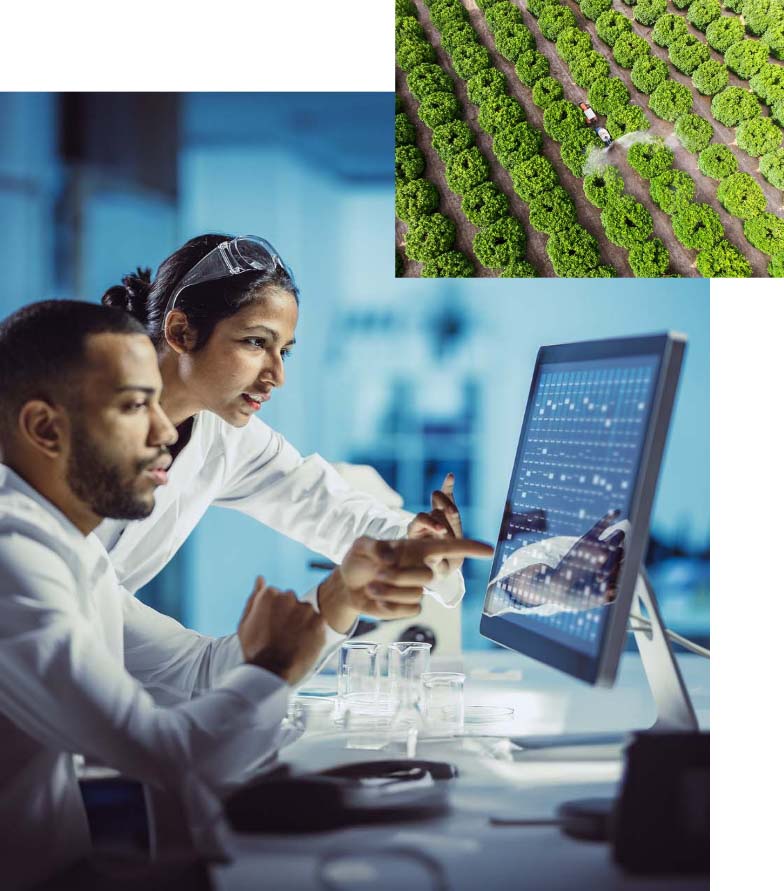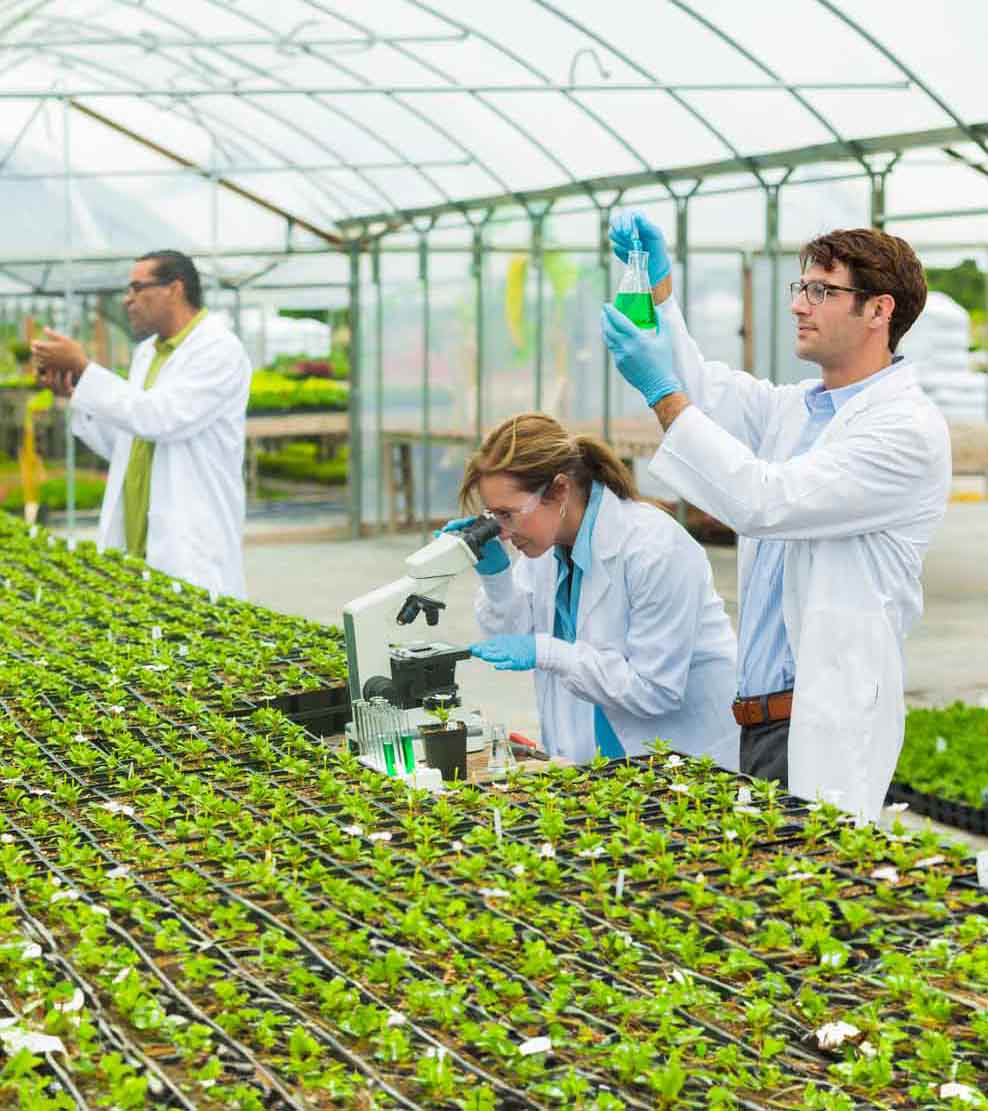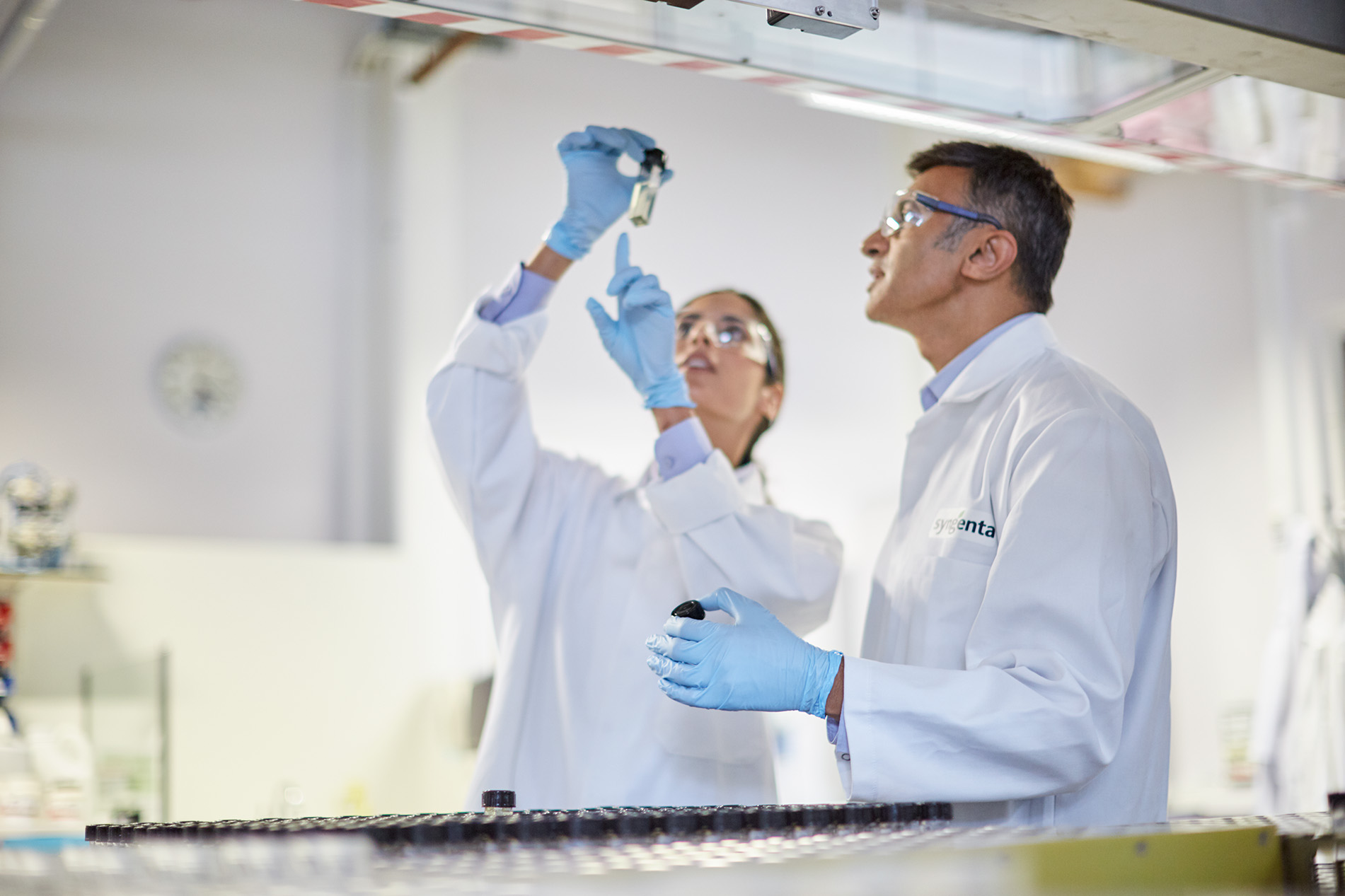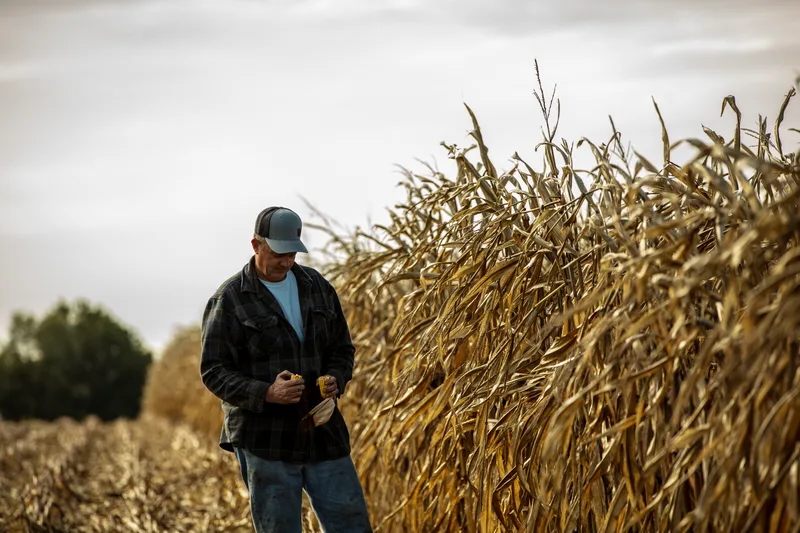Collaborative Innovations
Syngenta and IBM use AI to pioneer chemical compound synthesis
Farmers face an ever-changing combination of diseases, pests, and climate change as they work to feed the world. This means the challenge of providing them with advanced ways to protect their crops sustainably increases year-on-year.
In 2019, Syngenta scientists envisioned using artificial intelligence (AI) to design the next generation of crop protection agents. They aimed to develop new, highly effective molecules at unprecedented speed, while meeting stringent safety and sustainability criteria.
The collaboration between IBM and Syngenta has been a significant step forward, enhancing the stage of the invention process that involves synthesizing new active ingredients.
“Everyone now knows about language models but, back in 2019, this was very far-sighted of Syngenta”
Teodoro Laino, Distinguished Research Scientist and Manager, IBM Research
Introducing Natural Language Processing to chemistry
During three years of collaboration, IBM and Syngenta have successfully combined IBM's advanced Natural Language Processing (NLP) tools with the vision of Syngenta's research chemistry scientists.
This initiative began when IBM and Syngenta scientists demonstrated NLP's capability to learn Syngenta's reaction "dialect" and make accurate reactivity predictions in its largely unpublished chemical reaction space.

This discovery inspired Syngenta to develop a computational platform to close the chemical reactivity data loop. This platform would help scientists generate high-quality reaction data from experiments. The data would, in turn, feed the creation of custom reactivity models, helping scientists design new synthetic routes.
Throughout the collaboration, IBM and Syngenta teams have embedded the critical modelling capabilities of IBM-RXN into this computational platform, transforming the Syngenta scientific community's work practices in numerous ways. Easy access to predictions provides ideas for more efficient synthetic procedures for novel chemical entities.
A key advantage of this platform is its seamless integration of artificial intelligence with human expertise. Syngenta's experts review and refine AI predictions. The synthetic routes designed by AI, human, and hybrid (i.e. AI plus human) undergo the same downstream analysis workflows, including calculating data-driven quality metrics. This combined approach minimizes human biases and bridges gaps in the predictive capabilities of current models.
AI at the center of synthesis design
The partnership began after Marco Stenta, a Syngenta Science and Technology Fellow, contacted IBM Research.
"IBM disclosed their scientific idea as an open-source Python package. This allowed me to test the approach before reaching out to the IBM team. After some years of intensive work, AI is now at the core of our synthesis design – all new processes go through it,” says Marco.
Efficiencies gained include fewer experiments, increased ‘right-first-time’ rates, and lower costs.
"This efficiency level means that our chemists can delegate repetitive tasks to machine learning while focusing on more strategic, high-value work," adds Marco.
Teodoro Laino, Distinguished Research Scientist and Manager at IBM Research, reflects: “Everyone now knows about language models but, back in 2019, this was a very far-sighted approach from Syngenta.”
A six-month preliminary collaboration later, and the partnership was underway.
“It’s been an amazing collaboration and an awesome experience,” says Teodoro.
Openness was “in the DNA” of the collaboration, and key to its success, adds Marco. “We established an open collaboration with robust data protection practices: we protected IBM’s software and our chemical data. The collaboration was so smooth, and we enthusiastically embraced it.”
The incorporation of AI into Syngenta's new chemistry design processes will benefit more than just its chemists, with accelerated design of more sustainable synthesis procedures helping Syngenta meet the needs of growers.
Monika Trehan, Syngenta's Digital Collaborations Lead, observes: "With this approach, we can bring superior compounds to the market faster, benefiting farmers directly. Society also profits from our ability to minimize waste and find the most sustainable compounds."

“With this approach, we can bring better compounds to market faster, which will directly benefit growers. Society also benefits from our ability to reduce waste and find the most sustainable compounds.”
Monika Trehan, Digital Collaboration Lead, Syngenta
A model collaboration
The IBM experience has set the standard for future Syngenta collaborations.
Marco remarks: "Our approach to digital collaborations has evolved massively after this experience with IBM. We feel we can be more open, sharing and amplifying ideas in pre-competitive spaces."
Teodoro concurs: "The partnership with Syngenta enabled us to apply our modelling approach to proprietary data, which would have been otherwise inaccessible. It not only highlighted real-world problems but also helped us improve our platform. This work showcases how these reactivity models can be tailored to industrial partners' needs, delivering immense value through increased predictive power."
Syngenta's IT team is now fine-tuning the platform integration details, while data scientists are planning the next phase, including the modeling of bio-catalyzed reactions and metabolic degradation pathways.
Looking for other ways to work with us?
Shoots by Syngenta is a platform built on collaboration, designed to advance sustainable agriculture by bringing together ideas, technologies and research. Discover more about what we do, and how you can be a part of it, below.




